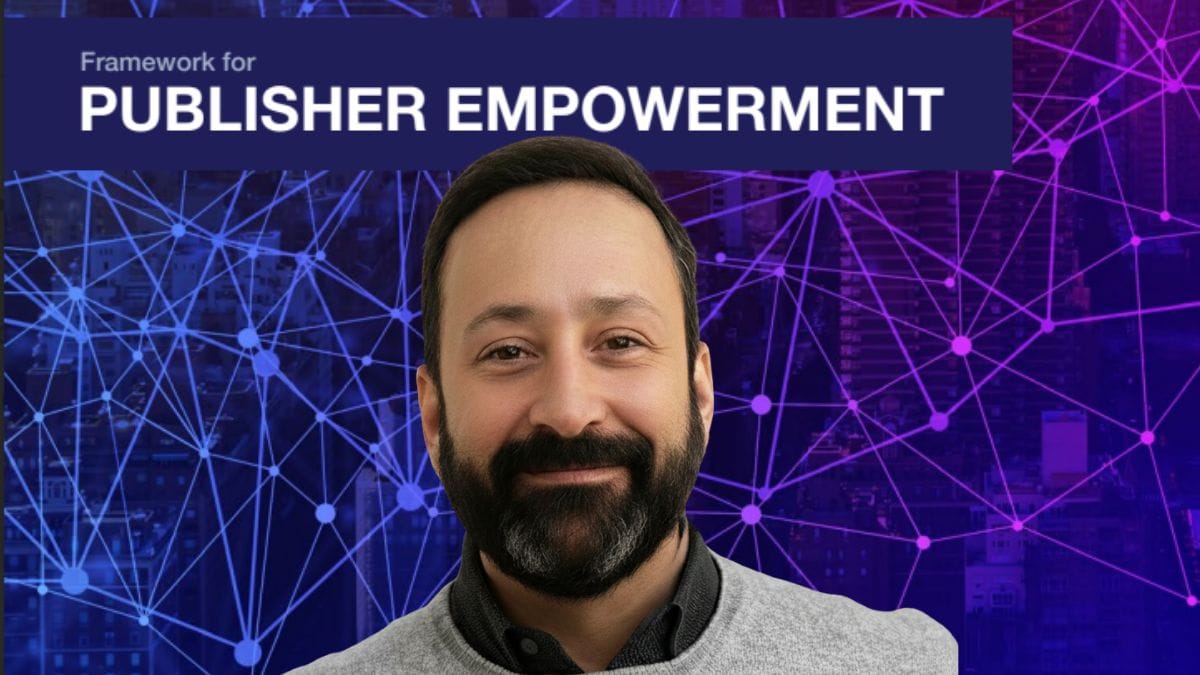TVIQ Issues Framework to Give CTV Publishers More Control Over Ads
The difficulties in getting data about their own channels is another big problem for publishers

The connected TV business is like the weather. Everyone talks about it but no one can do anything to fix it.
With consumers still cutting the cord, streaming’s share of viewing continues to rise. And with the economy tightening up budgets, free ad supported streaming TV (FAST) channels are becoming an increasingly popular option.
And yet, while CTV boasts about offering targeting at scale within premium content, ad dollars aren’t flowing as fast as eyeballs. And of the ad dollars that are going to FAST channels, not enough of them are going to the programmers to sustain and grow the category, TVIQ CEO Scott Ryan tells The Measure.
“Individual channel operators are struggling in the connected TV world,” Ryan says. “They’re struggling because the power, the innovation and the aggregation that inevitably occurs in ad tech is happening on their backs.”
Ryan says FAST channels should be benefiting more from the growth of CTV and the ad dollars flowing into it. Instead, they’re encountering lower fill rates, lower CPMs and distributors are assuming more and more control.
The problem is that when channels make deals to get distribution on platforms like Roku, they give up a big chunk of their ad inventory and lose the ability to use a lot of the data about who is watching their programming.
Specifically, TVIQ says distribution platforms dictate their ownership rights over inventory, they routinely devalue publishers' bid requests and limit publishers in how they can represent and value their own supply.
Ryan says there’s nothing nefarious about those deals, which took form 10 years ago when the streaming business was in its infancy. The terms mirror the distribution deals made by cable channels that provided operators with a local ad inventory.
Now those deals need to be rebalanced, Ryan argues, but individual channels don’t have the clout to force the distributors to give the better terms at a time when the digital giants are flexing their ad-tech muscles.
Ryan’s solution is to try to build a coalition that would buy for what TVIQ is calling The Framework for Publisher Empowerment.
The planks of its platform include channels maintaining at least 60% of their own inventory and platforms being barred from selling individual channels directly to protect publisher revenue streams and pricing.
The Framework also declares that contextual data available to streamers must also be shared with publishers free of charge to ensure fairness and consistency across demand channels.
At the same time, channel names must be passed on in all bid requests originating from the publisher. A persistent Channel Name ID should be developed to validate traffic and increase the value of impressions.
TVIQ is inviting publishers, buyers and other ad industry players to review and comment on the framework.
Ryan says TVIQ is in a unique position to bring publishers together in this effort because in its role of helping publishers manage their ad stacks and grow ad revenue, it can see the full flow of dollars from the buy side to the sell side and identify the choke points. “And we feel our publisher’s pain,” he adds.
A bottoms up, advocacy-driven campaign is the best way to win publishers control over their inventory and a better share of the revenue that’s flowing into the streaming ecosystem, Ryan says.
Ryan pointed to a couple of examples where publishers need a stronger seat at the table. Take the case of popular pause ads and other non-linear formats. “I don't think we have talked enough about how non-linear advertising inventory and revenue is going to be shared with the channel over which that non-linear advertising is running,” he said.
The difficulties in getting data about their own channels is another big problem for publishers. Ryan says that one publisher saw that one of its channels often ran “be right back” slates in commercial breaks. But the publisher couldn’t obtain data about how much viewing time was unsold on their channels and how much audience was going to waste.
In some cases, streaming platforms will require publishers to pay for data signals from their share of the bid stream, he added.
TVIQ is counting on getting a significant amount of participation for its effort to create a new framework.
“The feedback from publishers has been overwhelmingly positive,” Ryan said. “Honestly, the feedback from other ad technology companies has been overwhelmingly positive as well, because ultimately, this structure is good for everyone.”
He said the framework would open up more inventory directly from publishers, which is good for the ad tech companies, who now have to deal with platforms that are less-than-transparent about what inventory they’re selling.
It’s also good for media buyers and advertisers because they get more transparency and more dollars flowing directly to publishers. Those publishers can reinvest in content development to create more engagement, which is good for advertisers, he said.
“If we don't pay attention to how we enable and empower CTV publishers, we're going to experience a real challenge,” Ryan says. “It will lead to the loss of content. It'll lead to the loss of audience, and it will lead to, ultimately, a contraction in that industry, as opposed to ongoing growth.”

